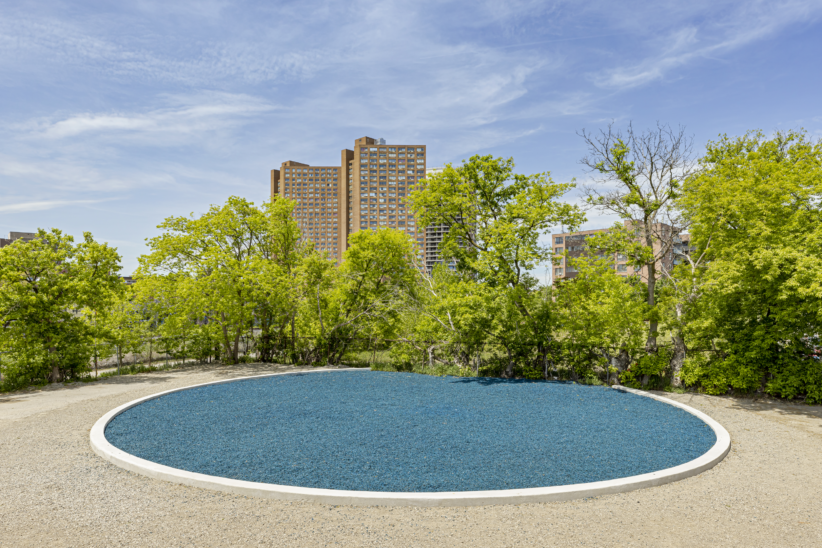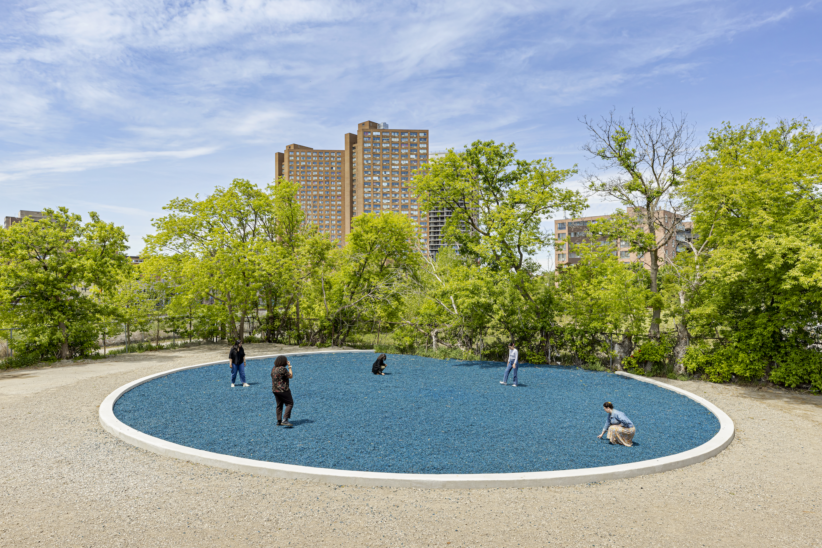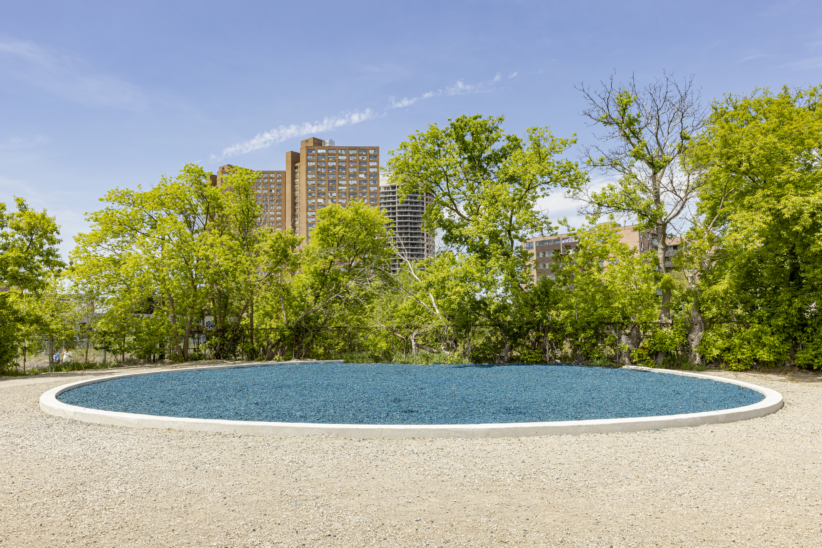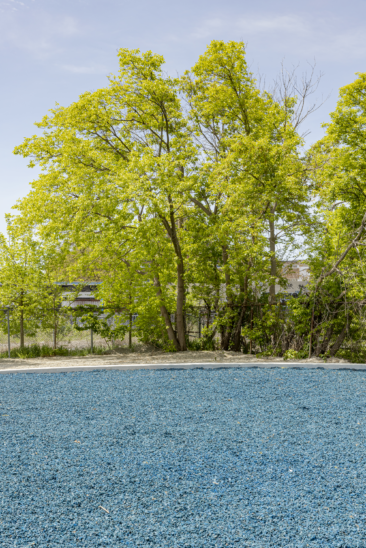Forced Afloat (2022) is a public artwork by Ghazaleh Avarzamani installed in the former parking lot of 72 Perth, a former Pentecostal church. The work consists of 7,000 square feet of blue rubber mulch installed in a wide semi-circle with a cement-poured outer edge. The mulch is commonly used in children’s playgrounds because it is a play-safe surface that slows movement, limits cuts and bruises, and cushions falls. Re-installed here, outside one of the main Biennial sites, the artwork is positioned to invite public access and use; a free, interactive arena for play or reflection, and a potential site for some Biennial programs and events.
Forced Afloat is the latest iteration of a project that developed in 2021 while the artist was in residence at the Aga Khan Museum–organized in partnership with the Delfina Foundation, London, UK. At the museum, the mulch was installed outdoors in their park, filling five large reflective pools. For the Biennial, all the material is gathered in one spot that is freely accessible to visitors and passersby. The mulch’s azure-blue colour creates the illusion of a pool, a faux body of water–an association reinforced by the title. Familiar to those who frequent children’s playgrounds, the blue mulch signals and invites play, whilst limiting movement to protect against injury. A similar and less subtle contradiction lies in the material itself, which is made from recycled tires. It may be lauded by some as environmentally conscious reuse, yet rubber tires are sixty-percent synthetic, made from petroleum-derived hydrocarbons. The mulch is packed with highly toxic chemical compounds and has been approved for wide use in public playgrounds.
Forced Afloat dispels the illusion of safety in playgrounds and public space to reveal the invisible social contracts by which people accept limits on—and sometimes ignore threats to—collective and individual freedom. The true underlying menace for Ghazaleh is not the physical harm but rather the laws and systems that inform the design of playgrounds and public spaces, which impose limitations on and, in some cases, control or repress human relations. The work represents the central tenets of Ghazaleh’s practice, to explore games and play as tools to deconstruct, replicate, or transform public spaces, and disrupt hegemonic systems of power. Through her work, she interrogates the norms, rules, and methodologies that shape human relations within contemporary society. And, like the material and contradictory conditions it creates, the work represents a liminal state, a space between the street and a biennial site, a former church transformed into a temporary cultural space before redevelopment. It’s a mutable space, an arena, a playground, a pool whose promise of unencumbered movement and weightless abandon is undone by the material that drags heavy and awkwardly on bodies at play.
Co-presented with the Aga Khan Museum. Made possible with the generous support of the Women Leading Initiative, Galerie Nicolas Robert, and Ab Anbar Gallery.
Be sure to explore the additional works of Ghazaleh Avarzamani at the Aga Khan Museum as part of the exhibition, A Romance of Many Dimensions.
Detailed Audio Description:
Audio Didactic:
Bio
Ghazaleh Avarzamani (born in 1979, Tehran; lives in Toronto, Canada) is a multidisciplinary artist with focus on dominant power structures; By considering a range of spaces and methodologies for interactivity and play she explores the opposing ideas about the purpose of education, these considerations include reflections on games and their pre-designed educational purposes. Her work investigates how official historical narratives are constructed, and the hierarchies behind the ‘voice of authority’. In her practice she is creating visual
narratives that are a simultaneous deconstruction and reconstruction of time (history) and space (geography).
Avarzamani graduated from the Central Saint Martins in 2013. She has exhibited at the Museum of Contemporary Art, Toronto; Aga Khan Museum, Toronto; Vestfossen Kunstlaboratorium Museum, Norway; and many more.
Exhibition Site
72 Perth Avenue
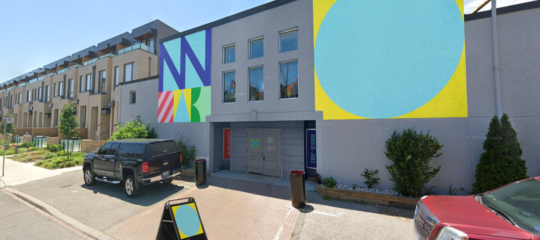
72 Perth Ave
Toronto ON
M6R 2C2

